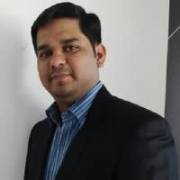

Oracle Cloud Infrastructure and Red Hat OpenShift on IBM Cloud compete in the cloud computing category. While OCI is favored for its comprehensive database solutions and enterprise management, Red Hat OpenShift is notable for its Kubernetes orchestration and developer-centric environment.
Features: OCI offers autonomous databases, high availability, and scalability for enterprise workloads. Its robust management tools for databases are often highlighted as key strengths. Red Hat OpenShift provides excellent Kubernetes orchestration, strong integration with CI/CD pipelines, and an active developer-friendly platform.
Room for Improvement: OCI faces challenges with complex configurations, limited regional data centers, and third-party integration. It could benefit from enhanced technical support and clearer pricing transparency. Red Hat OpenShift could improve by refining performance optimization, simplifying the user interface, and expanding integration capabilities for wider system compatibility.
Ease of Deployment and Customer Service: OCI is praised for ease of deployment across public, private, and hybrid environments but needs better integration processes. Customer service satisfaction is mixed, with timely support inconsistently reported. Red Hat OpenShift ensures efficient deployment with reliable Kubernetes support but experiences criticism for its customer service response time and setup complexities.
Pricing and ROI: OCI's competitive pricing, particularly for existing Oracle license holders, is attractive, with a pay-as-you-go model that enhances cost-effectiveness and delivers solid ROI. Red Hat OpenShift has reasonable pricing for enterprise applications, offering good value through its comprehensive tool suite, though some view it as needing better cost-competitiveness.
| Product | Market Share (%) |
|---|---|
| Oracle Cloud Infrastructure (OCI) | 6.9% |
| Red Hat OpenShift on IBM Cloud | 0.6% |
| Other | 92.5% |


| Company Size | Count |
|---|---|
| Small Business | 33 |
| Midsize Enterprise | 20 |
| Large Enterprise | 53 |
| Company Size | Count |
|---|---|
| Midsize Enterprise | 2 |
| Large Enterprise | 6 |
Oracle Cloud Infrastructure offers autonomous database solutions, flexible scalability, and seamless application integration, backed by strong security features. Its competitive pricing and multi-tenancy capabilities provide significant value for enterprises needing comprehensive cloud infrastructure.
Oracle Cloud Infrastructure delivers robust database management, frequent updates, and advanced storage and network services. It boasts global pricing consistency and broad accessibility, making it a preferred choice for hosting databases and migrating on-premises applications. Users in diverse sectors rely on its ease of use, particularly in hosting applications and infrastructure management. However, OCI faces challenges in documentation and integration with third-party services and seeks improvement in automation, support responsiveness, and regional availability.
What are the key features of Oracle Cloud Infrastructure?OCI is utilized by companies in sectors like gaming, finance, and IoT for hosting databases and ERP systems. Its robust infrastructure supports high-performance computing and application development, making it a favorable option for integration and analytics tasks. Enterprises benefit from its capability to migrate on-premises systems to the cloud, enhancing their operational efficiency.
Red Hat OpenShift on IBM Cloud™ is a fully managed OpenShift service that leverages the enterprise scale and security of IBM Cloud, so you can focus on developing and managing your applications.
Deploy highly available, OpenShift clusters as-a-service with the click of a button on IBM Cloud. Move and build OpenShift-based workloads on a managed public cloud service to gain increased responsiveness, scalability, and reliability.
We monitor all PaaS Clouds reviews to prevent fraudulent reviews and keep review quality high. We do not post reviews by company employees or direct competitors. We validate each review for authenticity via cross-reference with LinkedIn, and personal follow-up with the reviewer when necessary.